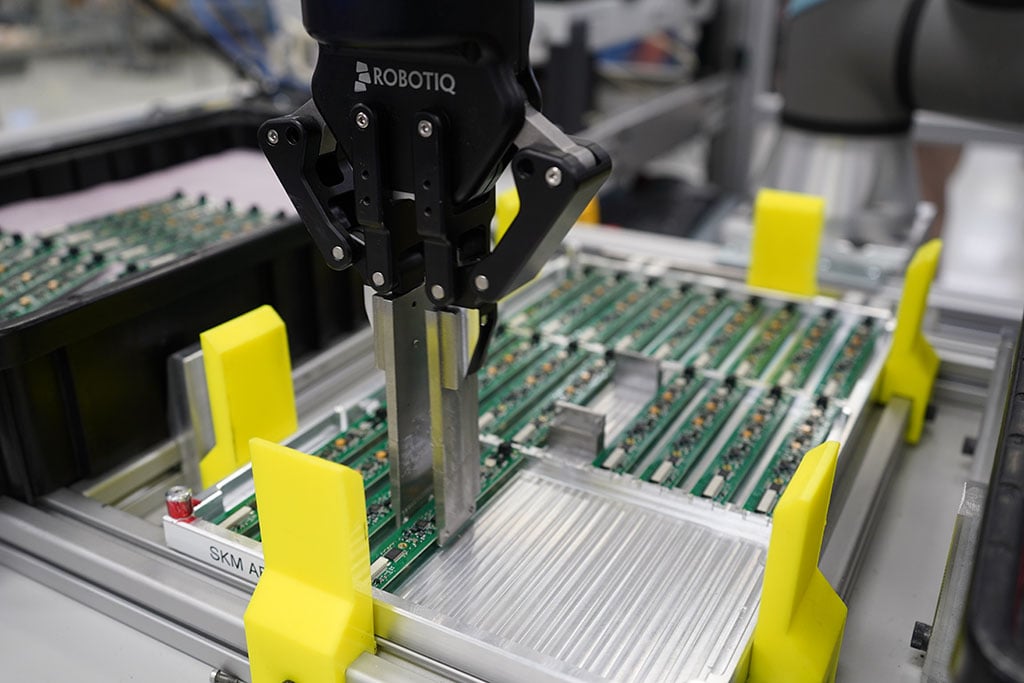What We Learned About How to Thrive with Robots in 2020

Posted on Apr 02, 2021 10:04 AM. 5 min read time
As countries start to open up a bit more after the global pandemic, it's helpful to look back on what we've learned in 2020. Robots have been a driving technology behind the response to many of the changes.
What lessons did we learn about how to thrive in the face of difficulty?
The year 2020 is now fading into our memory and the new world that it has left behind is starting to become clearer. But, things are still uncertain in our industries. We still don't know what the long-term impacts of the Covid-19 pandemic will be on our businesses and economies.
At this time last year, the full effect of the worldwide pandemic was still a mystery.
Many companies thought that they just needed to "wait it out" and hope for a swift return to normality.
Manufacturers closed down their machines, shops closed their doors, and everyone held their breath.
But, some companies didn't rest on their laurels.
Some companies chose to use this period of uncertainty as a way to prepare for the future. They employed robots and other forms of flexible automation to get a head start.
And we can learn a lot from this approach.
Why waiting for the return to normal didn't work
Depending on when you read this article, your knowledge of how the pandemic finally turned out may be different from mine.
One thing is certain, the world that follows 2020 cannot be the same as the world that preceded it. There is no such thing as a "return to normal" after such a large change.
This is just a basic law of engineering.
Hysteresis is the dependence of a state of a system on its history. It is used in as such fields as mechanical engineering, materials science, and biology. According to the London Business School, the post-covid world will have residual changes as a result of the pandemic and its effect on societies.
Changes to consumer behavior will persist, which will affect our business operations.
Changes to workplace behavior will persist, which will affect our business cultures.
Changes to the structure of companies will persist, which will alter how we do business.
With so many persistent changes, it is clear that waiting for a "return to normal" is a potentially dangerous strategy. There are plenty of historical examples of companies that failed to innovate in the face of changes and became obsolete as a result: Pan Am, Compaq, and General Motors, to name just a few.
Choosing to avoid change following the Covid-19 pandemic would be a risky move.
A better approach to change
Thankfully, there is much we can learn about how we can continue to thrive by looking at how forward-thinking companies responded to the pandemic.
As executive coach Melanie Parish explained, a lot of companies switched to "startup mode" when the pandemic hit. She said "Everyone is experimenting because it's all we can really do."
This "startup mode" focused on experimentation. It is a good strategy during times of high change. One way to move forward with such a strategy is to employ the right technology.
According to a new McKinsey survey, the global situation has pushed many companies to adopt new digital technologies to stay competitive. Many of the global executives they surveyed said that they had responded to Covid-19-related changes much more quickly than they had previously thought possible.
Robotic automation is one technology that many companies employed to respond swiftly to changes. This can be seen most clearly in the US import statistics for 2020. While most imports plummeted, industrial robots imports saw a growth of 5%, a figure only surpassed by imports of pharmaceuticals.
And it makes a lot of sense that companies are choosing to use robotic automation at this time. As we've explained before, technology spending often increases during challenging situations as companies look for better ways to streamline their operations.

What we learned about how to thrive in 2020
The year 2020 taught us a lot about how we can help our businesses to thrive with the help of robots in times of crisis.
Here are a few of the things we learned:
Agility is the key
Those businesses that were able to "roll with the punches" that the year provided them were much more capable of surviving. Operational agility is always important but it is vital in times of difficulty and change.
Automation helps agility
Robotics is an especially good technology for improving operational agility. Collaborative robots in particular can be reprogrammed and redeployed in the blink of an eye, making them well suited to quick changes.
Seek out new opportunities
The companies that have done well in the pandemic are those that were able to recognize new opportunities early and jump on them quickly. Whether they were changing their manufacturing lines to make hand gel or moving their operations online, an eye for new opportunities was a top skill.
Get up and running quickly
During a crisis like this one, there is very little time to wait. There just isn't time for robot deployments to last several months, as they traditionally do. For this reason, getting up and running quickly was a key trait of companies that succeeded during this pandemic. And that means deploying robots using a lean robotics methodology.
How to continue to thrive right now
How can you continue to thrive in this post-pandemic world?
Even if you didn't jump into action as fast as you'd have liked to during the year 2020, it's never too late to get started.
Why not look at your operations and identify aspects that could benefit from agile robots?
Which tasks are good candidates for robotic automation in your business? Tell us in the comments below or join the discussion on LinkedIn, Twitter, Facebook, or the DoF professional robotics community.


Leave a comment